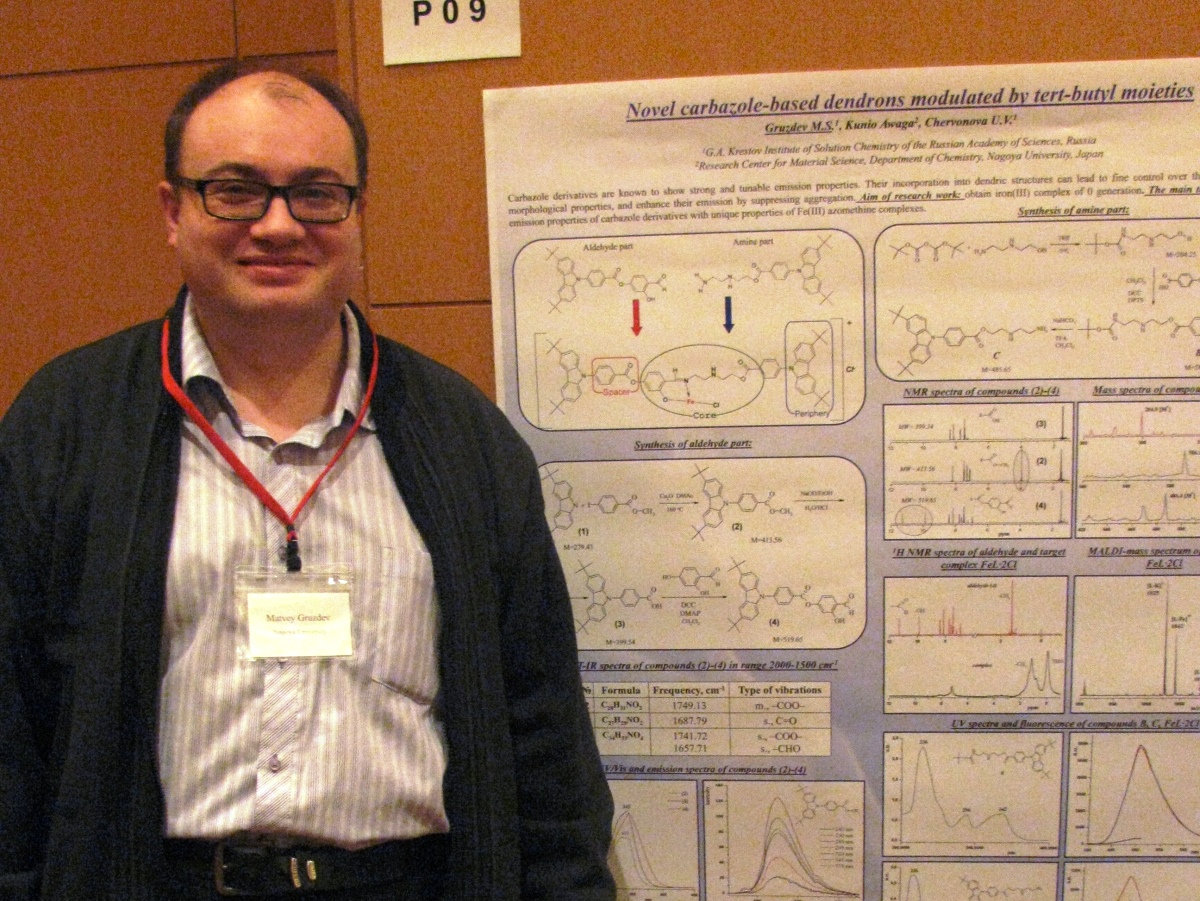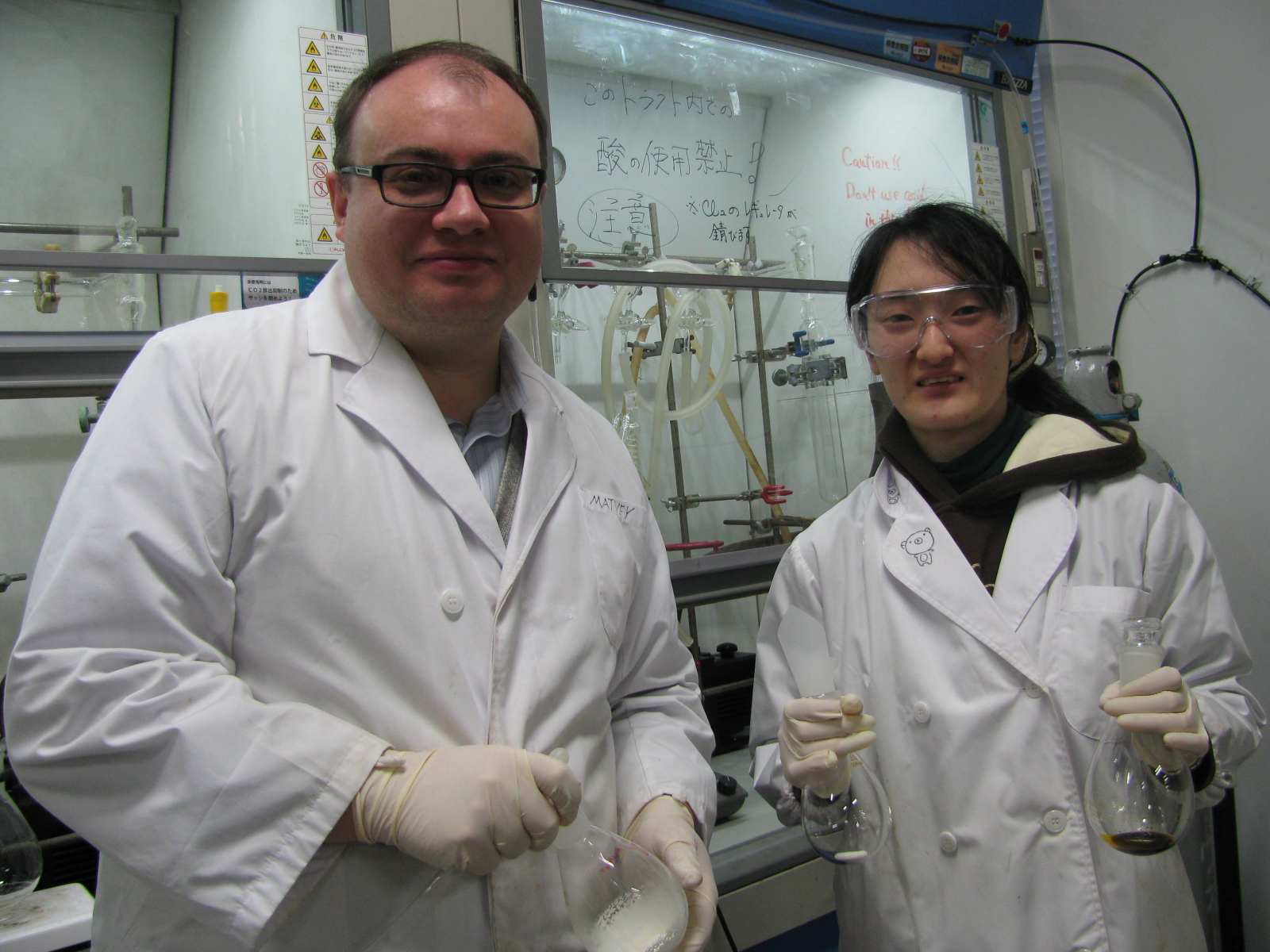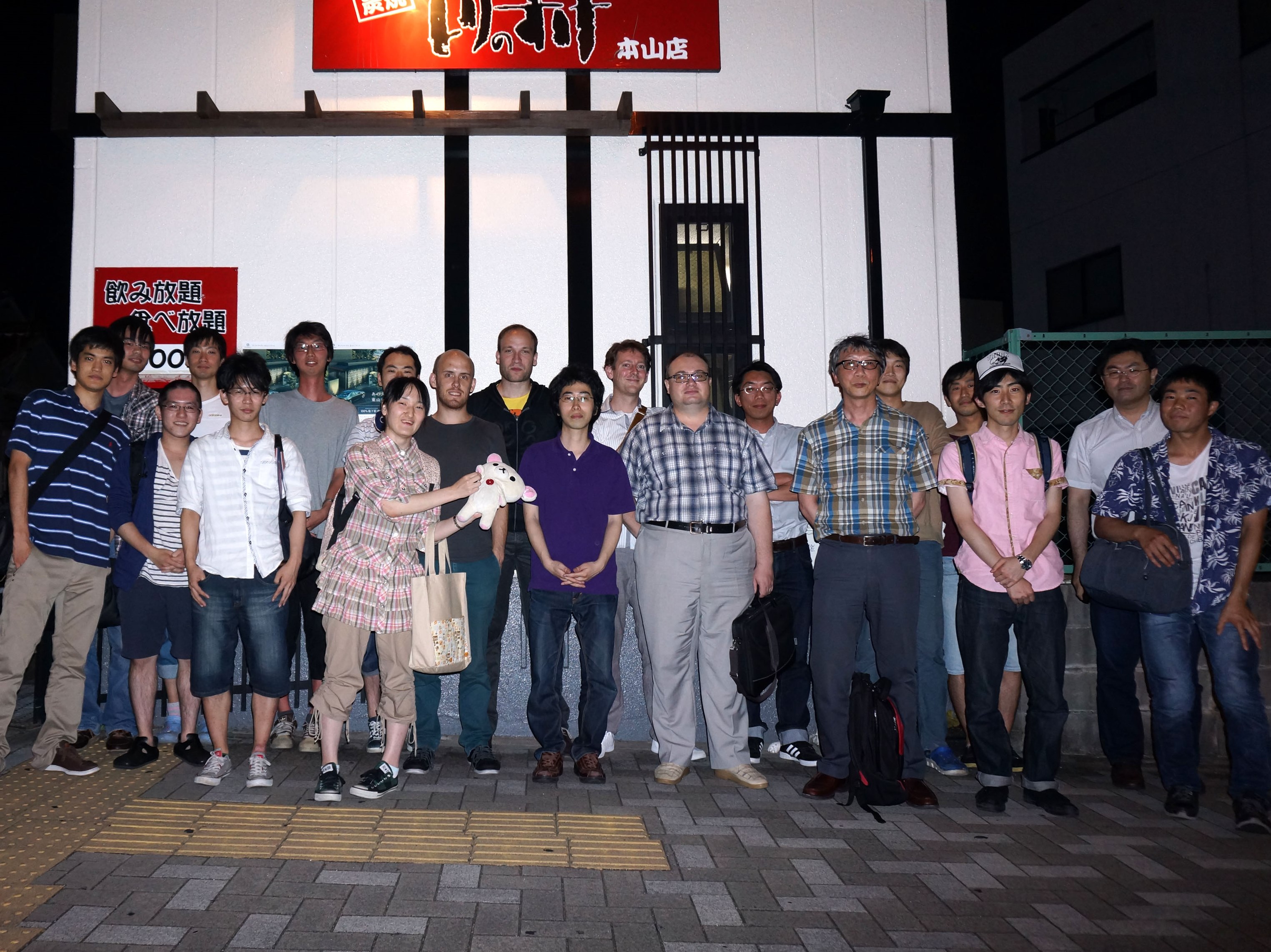Russian Researcher's Lab Visit for a 10-month Research Collaboration





June 2, 2014- April 1, 2015
Russian Researcher’s Visit to Awaga Group for a 10-month Research Collaboration
Nagoya University, Japan
Matvey Gruzdev
Dr. Gruzdev Matvey, a researcher at G.A. Krestov Institute of Solution Chemistry of the Russian Academy of Sciences, has visited Awaga Group, Nagoya University for a 10-month research collaboration toward “Synthesis and solid state properties of paramagnetic dendrimer complexes”. His visit provided a great opportunity to exchange ideas for future studies to graduate students/young researchers of CtC members.
Dr.Gruzdev's Research Summary:
The Fe(III) complexes with Cl-, NO3-, PF6- counter ions based on a branched Schiff base has been synthesized and studied. The compound was produced by the reaction of the Schiff base with FeCl3 and Fe(NO3)3*9H2O at room temperature in benzene–ethanol. The formation of azomethine in solution and complexion by addition of iron(III) salt were confirmed by FT-IR spectroscopy and mass-spectrometry, GPC-chromatography, elemental analysis and UV/Vis-spectrometry. According to elemental analysis, IR, 1H-NMR and mass spectrometry (MALDI ToF) it was found that bi(ligand) Fe(III) complexes were formed with octahedral packing of the metal ion. The presence of the counter-ion in the complexes was confirmed by IR spectroscopy. The complex is symmetric, i.e., bis-chelate, with an octahedral coordination of Fe. The compounds studied exhibit bright fluorescence.
Moreover, modification of the periphery of a dendritic metal complex by photoactive units will yield material with emission properties and light-controlled behaviour (sensor properties). The obtained dendrimer metallic complexes may be employed as model systems for studying the behaviour of organic matter in a magnetic field. There is a big chance of them being used in devices giving response to the variation of the magnetic component (magnetic sensors).
研究の概要
本研究では、新しい分子磁性体の構築を目指し、分岐したシッフベースを配位子として、Fe(III)との錯体を合成した。IRや質量分析、紫外可視吸収スペクトル、1H-NMR、元素分析などによって物質同定したところ、Fe(III)の6配位錯体の形成とともに、発光現象なども確認された。さらに本研究では、この化合物を原料として発光特性や光センサー機能をもつ金属錯体デンドリマーの合成にも取り組んだ。最終目的物の合成までは招聘期間に達しなかったが、金属イオンに由来する磁気モーメントをもつ発光性デンドリマーが合成されれば、外部磁場に顕著に感応する光センサー機能が期待される。
Poster Presentation
“Novel Carbazole-Based Dendrons Modulated by Tert-Butyl Moieties”
JSPS Core-to-Core/Leverhulme Trust Joint Workshop, Otaru 2014, “Organic Electronics of Highly-Correlated Molecular Systems”, Otaru, Hokkaido, Japan, Oct. 24-25, 2014


